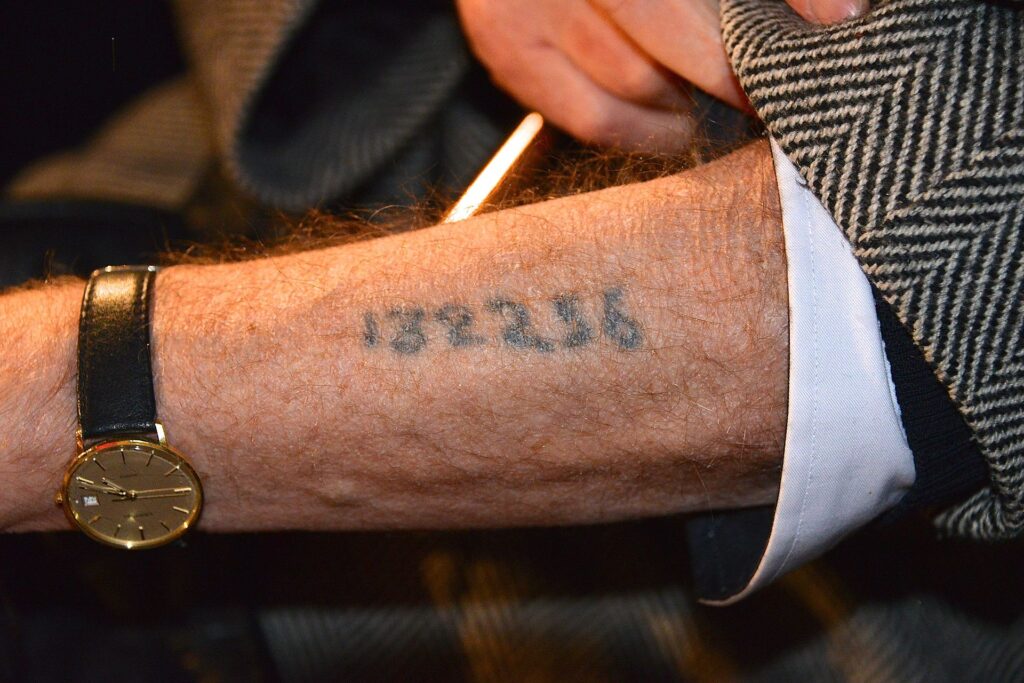A Bestseller and a Debate
The Tattooist of Auschwitz, written by Heather Morris and published in 2018, became an international bestseller. Translated into dozens of languages and adapted into a TV series, it captivated millions of readers worldwide. At the same time, it sparked controversy – historians and the Auschwitz-Birkenau State Museum pointed out many inaccuracies. This raises an important question: how true is this story?
The Novel and Its Story
The novel follows Lale Sokolov, a Slovakian Jew deported to Auschwitz-Birkenau in 1942. Selected to work as the camp’s tattooist, he was responsible for marking identification numbers on prisoners’ arms. Amidst horror and brutality, Lale met and fell in love with Gita Furman, another prisoner.
After liberation, Lale and Gita reunited, married, and lived together until Gita’s death in 2003. Their story of resilience and love became the heart of Morris’s novel.
The Real Lale Sokolov
Lale Sokolov (1916–2006) truly existed. He was deported from Slovakia in 1942 and survived Auschwitz by working as a Tätowierer (tattooist). His role gave him certain privileges – but also moral dilemmas. Tattooing in Auschwitz was conducted by a prisoners’ work detail; Lale Sokolov served as one of the principal Tätowierers, often with assistants, rather than as an exclusive, permanent tattooist.
After the war, he emigrated to Australia with Gita, and only decades later shared his memories with Heather Morris.

Historical Accuracy – Facts vs Fiction
Although based on Sokolov’s testimony, The Tattooist of Auschwitz is not a reliable historical source. The Auschwitz-Birkenau State Museum described the book as:
“An impression about Auschwitz inspired by authentic events, almost without any value as a document.”
Among the issues raised by historians:
- prisoner numbers and transports do not match archival records
- the tattooist role was not permanently assigned to one man
- fictional scenes, such as Dr. Mengele sterilising a male prisoner, never occurred
- exaggerations of events such as the Sonderkommando revolt – in reality, on 7 October 1944 Crematorium IV was disabled and destroyed, while Crematoria II and III were blown up by the SS in January 1945
For a detailed breakdown, see the Auschwitz Museum’s journal Memoria: Memoria No. 14 (2018).
Cilka’s Journey and Further Controversies
In 2019, Heather Morris published Cilka’s Journey, inspired by the life of another Auschwitz prisoner, Cecilia Klein. This sequel drew criticism from historians and from Klein’s family, who objected to how she was portrayed. The controversy highlighted once more the risks of fictionalised Holocaust stories.
The Sky TV Series Adaptation
In 2024, the story reached the screen as a Sky TV series, starring Jonah Hauer-King, Harvey Keitel and Anna Próchniak. With music by Hans Zimmer, it attracted international attention.
Historians, however, again stressed factual errors and implausible depictions. Dr. Wanda Witek-Malicka from the Auschwitz Museum noted that the series builds “an inauthentic picture of camp reality.” Memoria No. 80 (2024) published a detailed review.
While visually impressive, the series should be approached critically – it is primarily drama inspired by the novel, not documentary truth.
Should You Read The Tattooist of Auschwitz?
The Tattooist of Auschwitz is a novel inspired by true events. It is based on Lale Sokolov’s testimony but dramatized for storytelling. Readers should approach it as fiction blended with fact – not as a historical record.
The book has emotional power and has introduced Auschwitz to many readers unfamiliar with its history. But for genuine understanding, it should be supplemented by survivor memoirs and historical studies.
Recommended Reading on Auschwitz
While novels like The Tattooist of Auschwitz may inspire interest, they are not substitutes for documented history. For reliable knowledge, we recommend:
- Books from the United States Holocaust Memorial Museum
- Publications from the Auschwitz-Birkenau Memorial and Museum
Exploring authentic testimonies and research ensures that memory is preserved with accuracy and respect.
